Messier 77 (NGC 1068) from Banon
In 2011 I imaged Messier 77 during the same holiday in Banon, France, again using my DSLR equipment under the region’s exceptionally dark rural skies. These conditions were particularly beneficial for capturing this bright yet structurally complex galaxy, whose luminous active nucleus contrasts sharply with its faint outer spiral structure—features that require long exposures and minimal skyglow to record well.
Messier 77, also known as NGC 1068, is one of the nearest and best-studied active galaxies, located approximately 47 million light-years away in the constellation Cetus. Classified as a barred spiral galaxy (SBa) and a prototypical Seyfert Type II galaxy, M77 hosts a supermassive black hole at its center that actively accretes material, generating powerful radiation across the electromagnetic spectrum. Surrounding the core is a bright circumnuclear star-forming ring, while the outer spiral arms contain numerous H II regions and dust lanes, though these are more difficult to capture due to the galaxy’s relatively low contrast and partially obscured structure. Deep imaging often reveals faint tidal extensions and an extended stellar envelope, suggesting a dynamic evolutionary history.
Photographing M77 under the pristine skies of Banon allowed its energetic core and subtle outer features to emerge more clearly than typical backyard imaging conditions would permit.
Data calibration and registration were performed with DeepSkyStacker, and the final processing was completed in PixInsight.
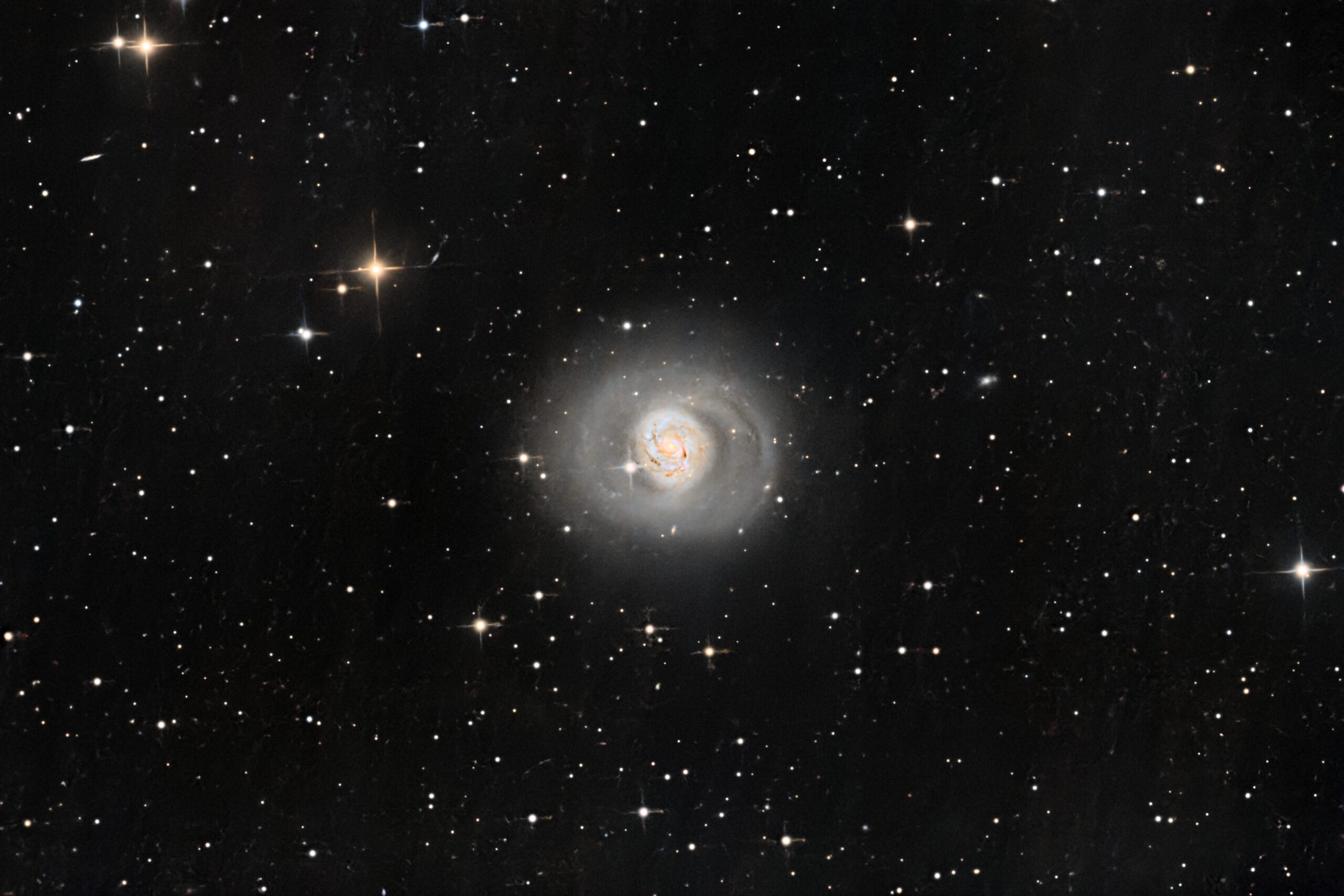
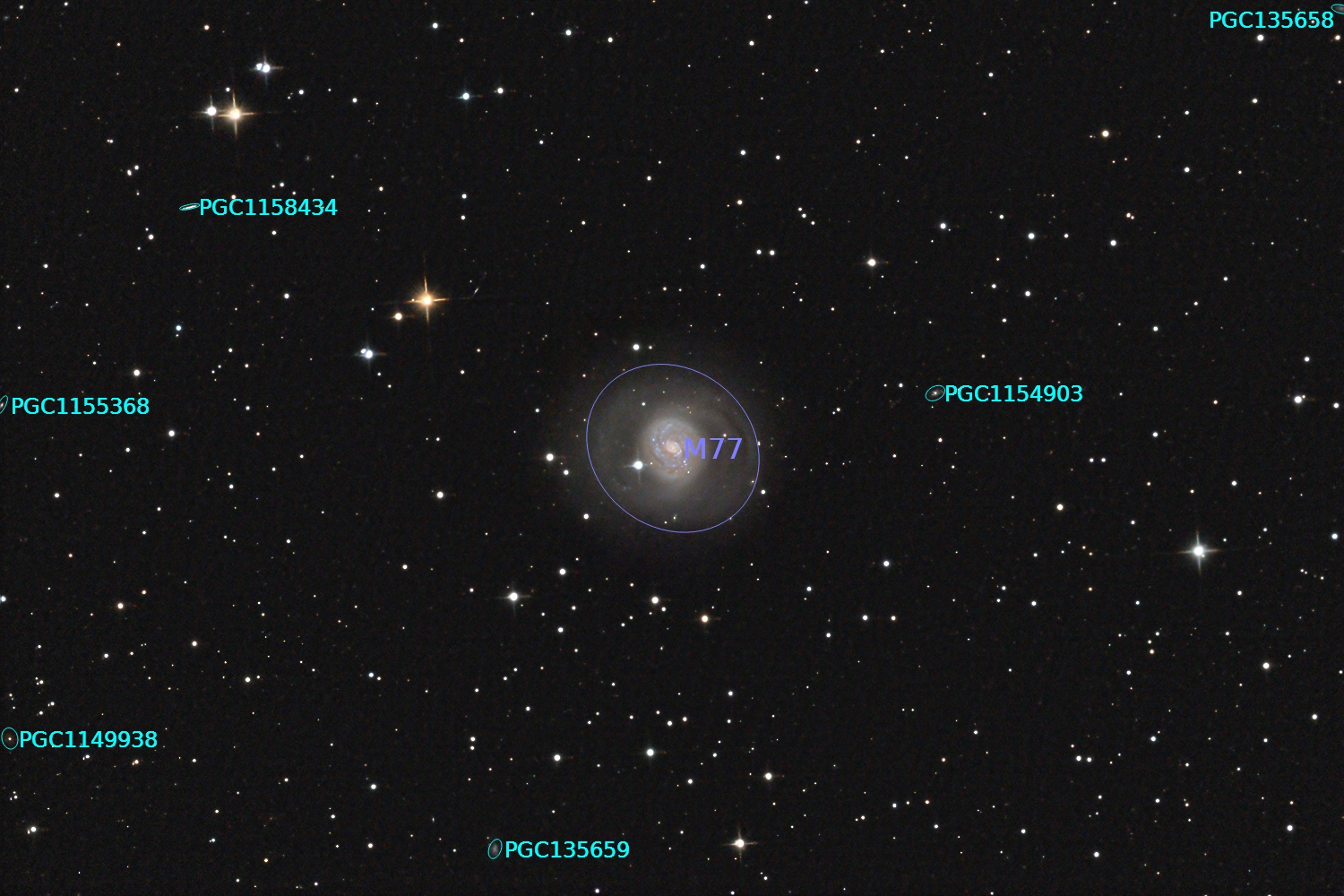
The images were taken with the following equipment:
- Date: 2011
- Location: Banon, France
- Telescope: TS 10″ Newton
- Focal length [mm]: 1140
- Focal ratio: 4.5
- Mount: Skywatcher NEQ6 Synscan
- Camera: Canon 500Da
- Filter: OSC
- Exposure time [min]: 168
- Resolution: 0.85″/px
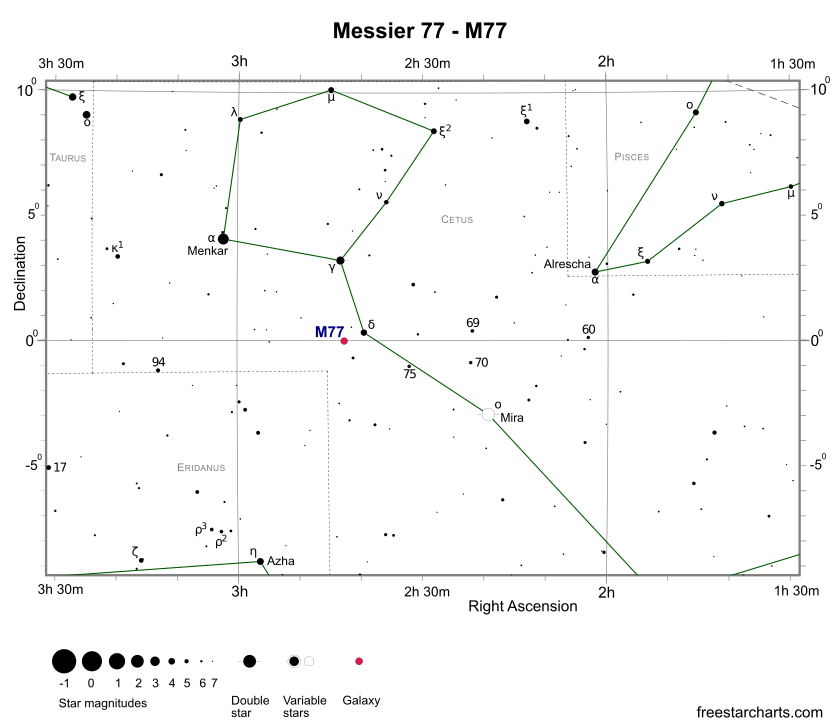
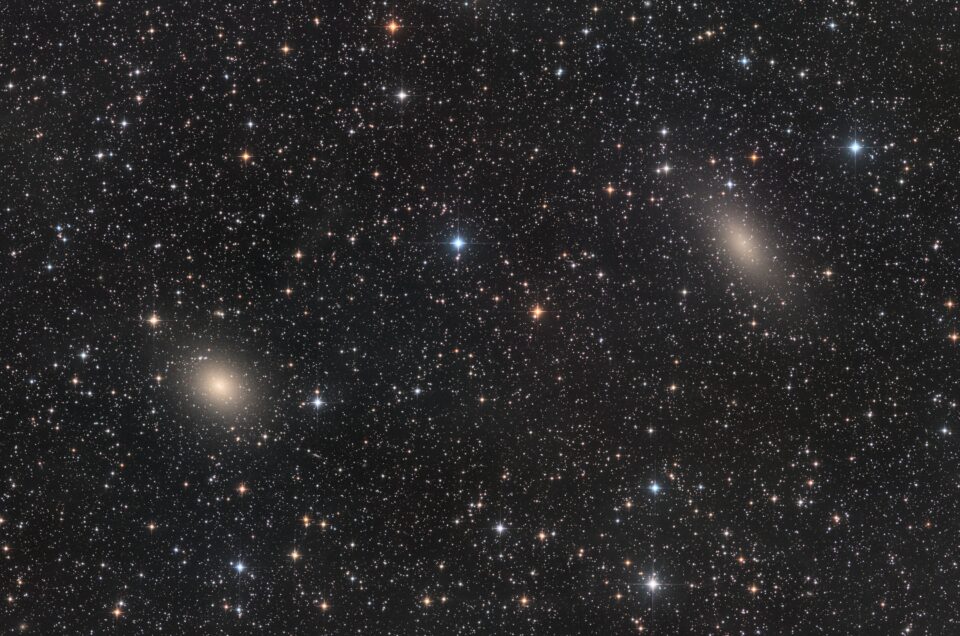

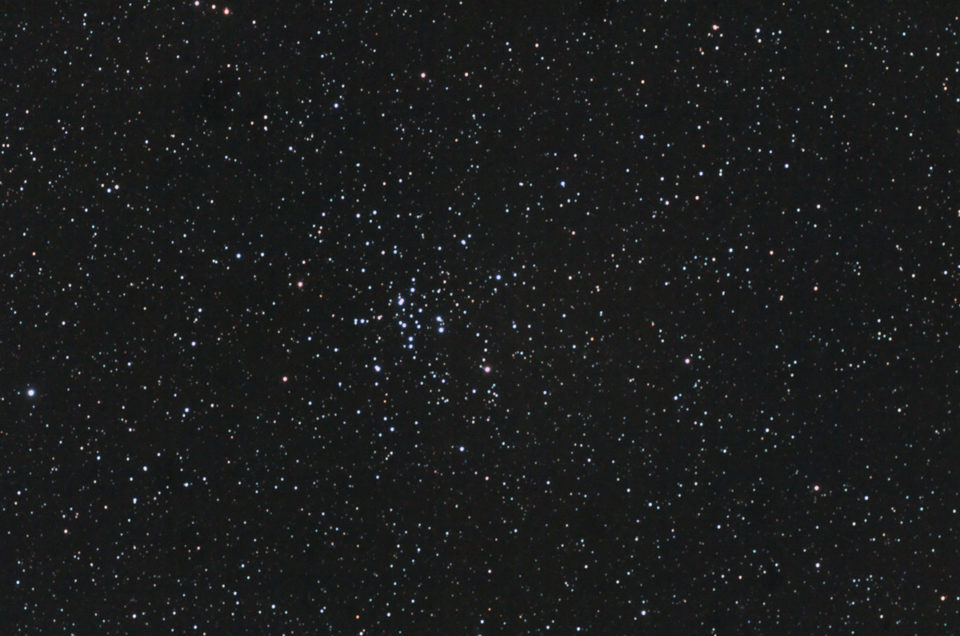
Leave a reply